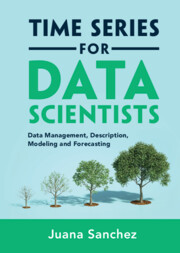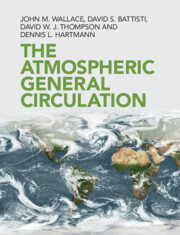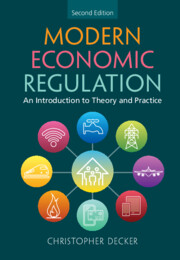Refine search
Actions for selected content:
36809 results in Cambridge Textbooks

Time Series for Data Scientists
- Data Management, Description, Modeling and Forecasting
-
- Published online:
- 01 June 2023
- Print publication:
- 11 May 2023
-
- Textbook
- Export citation

The Atmospheric General Circulation
-
- Published online:
- 26 May 2023
- Print publication:
- 20 April 2023
-
- Textbook
- Export citation

Modern Economic Regulation
- An Introduction to Theory and Practice
-
- Published online:
- 25 May 2023
- Print publication:
- 08 June 2023
-
- Textbook
- Export citation
2 - Bases and Similarity
-
- Book:
- Matrix Mathematics
- Published online:
- 29 September 2023
- Print publication:
- 25 May 2023, pp 26-55
-
- Chapter
- Export citation
10 - Model Estimation and Types of Data
- from Part IV - Model Construction and Evaluation
-
- Book:
- Nonlife Actuarial Models
- Published online:
- 07 July 2023
- Print publication:
- 25 May 2023, pp 255-273
-
- Chapter
- Export citation
Acknowledgments
-
- Book:
- The Grammar of Time
- Published online:
- 11 May 2023
- Print publication:
- 25 May 2023, pp x-xii
-
- Chapter
- Export citation
6 - The Mean-Field Approach
-
- Book:
- A Student's Guide to the Ising Model
- Published online:
- 11 May 2023
- Print publication:
- 25 May 2023, pp 150-173
-
- Chapter
- Export citation
7 - Macro-Causal Analysis
- from Part II - How to Use History to Describe Patterns
-
- Book:
- The Grammar of Time
- Published online:
- 11 May 2023
- Print publication:
- 25 May 2023, pp 116-134
-
- Chapter
- Export citation
About This Book
-
- Book:
- A Student's Guide to the Ising Model
- Published online:
- 11 May 2023
- Print publication:
- 25 May 2023, pp vii-viii
-
- Chapter
- Export citation
17 - Ratemaking
- from Part V - Loss Reserving and Ratemaking
-
- Book:
- Nonlife Actuarial Models
- Published online:
- 07 July 2023
- Print publication:
- 25 May 2023, pp 448-475
-
- Chapter
- Export citation
1 - Vector Spaces
-
- Book:
- Matrix Mathematics
- Published online:
- 29 September 2023
- Print publication:
- 25 May 2023, pp 1-25
-
- Chapter
- Export citation
3 - Aggregate-Loss Models
- from Part I - Loss Models
-
- Book:
- Nonlife Actuarial Models
- Published online:
- 07 July 2023
- Print publication:
- 25 May 2023, pp 77-102
-
- Chapter
- Export citation
6 - Orthonormal Vectors
-
- Book:
- Matrix Mathematics
- Published online:
- 29 September 2023
- Print publication:
- 25 May 2023, pp 111-136
-
- Chapter
- Export citation
Appendix: Review of Statistics
-
- Book:
- Nonlife Actuarial Models
- Published online:
- 07 July 2023
- Print publication:
- 25 May 2023, pp 476-509
-
- Chapter
- Export citation
Part II - How to Use History to Describe Patterns
-
- Book:
- The Grammar of Time
- Published online:
- 11 May 2023
- Print publication:
- 25 May 2023, pp 65-134
-
- Chapter
- Export citation
Contents
-
- Book:
- The Grammar of Time
- Published online:
- 11 May 2023
- Print publication:
- 25 May 2023, pp v-vii
-
- Chapter
- Export citation
13 - Model Evaluation and Selection
- from Part IV - Model Construction and Evaluation
-
- Book:
- Nonlife Actuarial Models
- Published online:
- 07 July 2023
- Print publication:
- 25 May 2023, pp 350-369
-
- Chapter
- Export citation
Introduction
-
- Book:
- The Grammar of Time
- Published online:
- 11 May 2023
- Print publication:
- 25 May 2023, pp 1-10
-
- Chapter
- Export citation
Contents
-
- Book:
- Nonlife Actuarial Models
- Published online:
- 07 July 2023
- Print publication:
- 25 May 2023, pp v-ix
-
- Chapter
- Export citation
Index
-
- Book:
- The Grammar of Time
- Published online:
- 11 May 2023
- Print publication:
- 25 May 2023, pp 208-214
-
- Chapter
- Export citation
